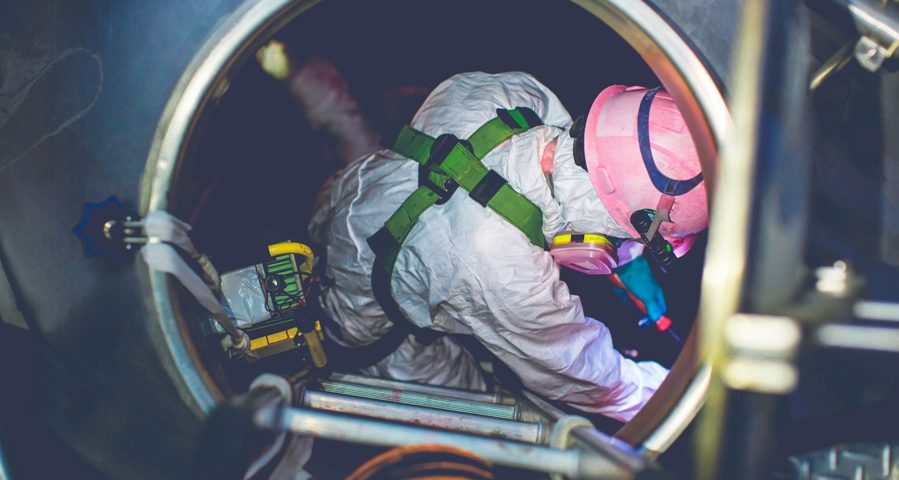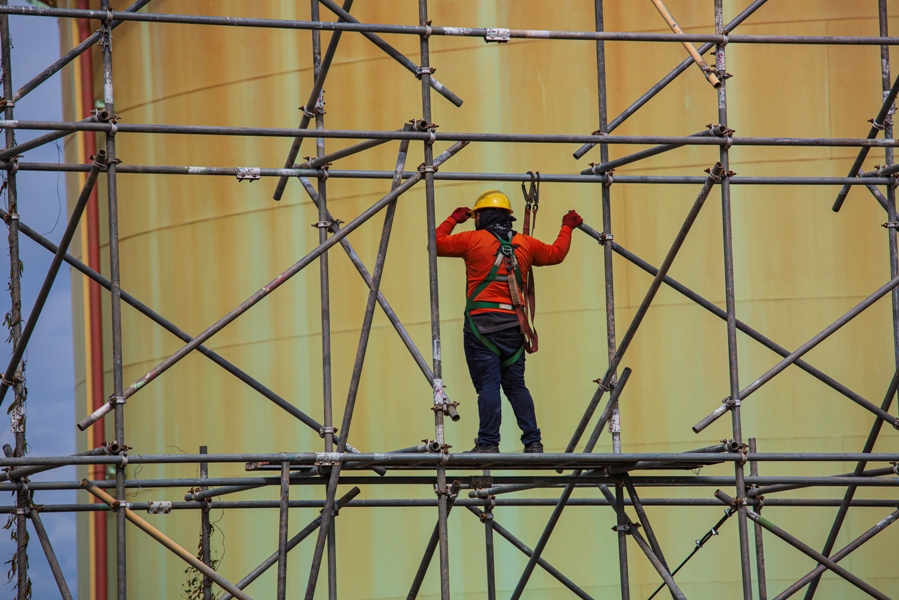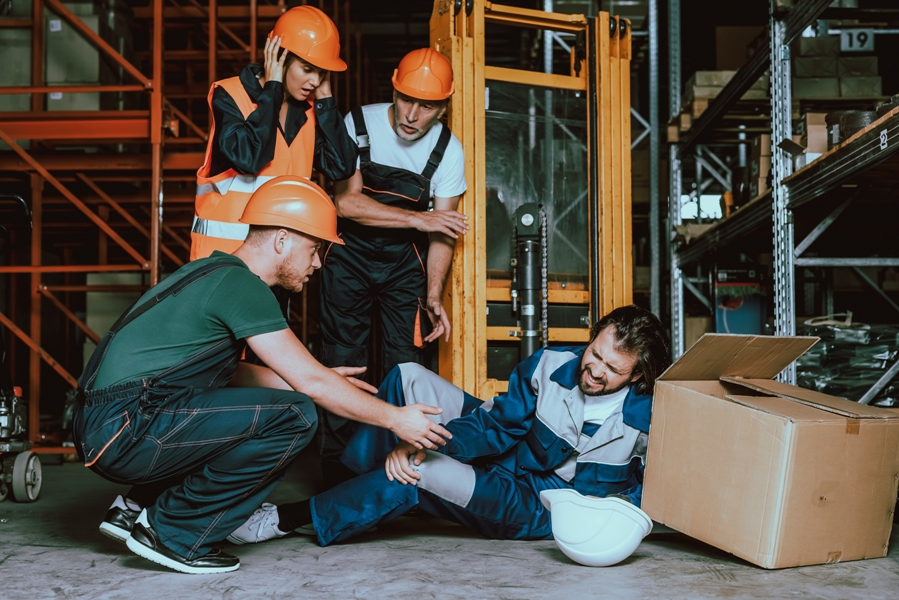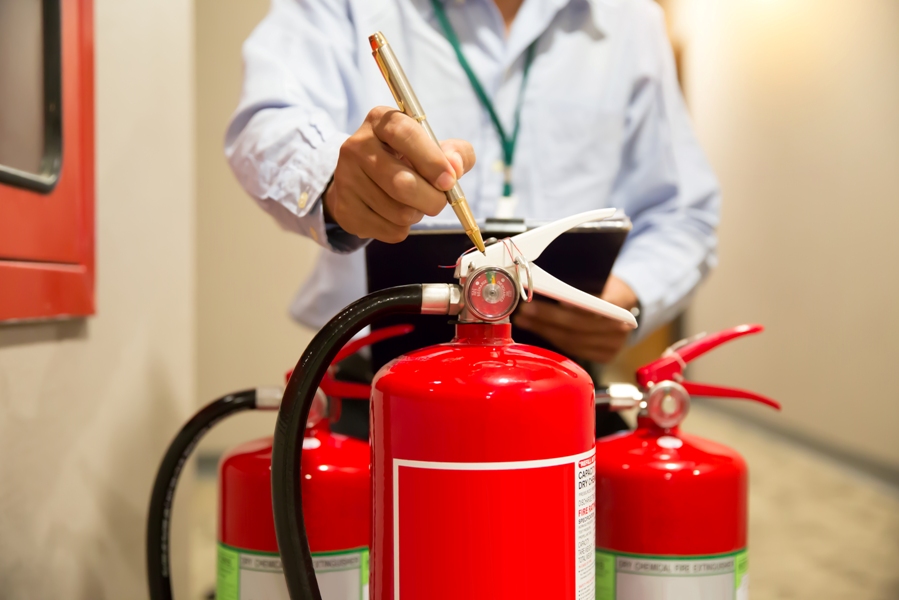
What is the Right OSHA Construction Course for Your Workforce?
January 22, 2023
OSHA and Employee Rights
March 15, 2023Confined Space Rescue Training – A Comprehensive Guide

Confined space rescue training is designed to equip you with the necessary skills and knowledge to ensure that you can safely enter and exit narrow areas for rescue operations, use equipment in accordance with the manufacturer’s instructions, and handle any emergencies that may arise. This type of training is particularly important for individuals and teams who frequently work in narrow spaces and should not be overlooked.
If you’re considering enrolling in confined space rescue training but are not sure where to start, this guide can tell you all about the different types of courses available, the regulations on OSHA training certification, and other things you must know before you proceed.
What are the different types of confined space training courses?
There are many types of confined space rescue training courses in Georgia. The right program to choose depends on your industry and/or workplace requirements. Here are the options:
- Confined Space Level 1 Training
This course teaches the basic concepts and principles of confined space safety and is suitable for workers involved in low-risk conditions, particularly those who work in spaces that (1) don’t require specialist equipment for entry and (2) have sufficient mechanical or natural ventilation, simple and unobstructed access, and zero risk of flooding.
- Confined Space Level 2 Training
This course addresses the principles for safely identifying, assessing, monitoring, and entering medium-risk confined spaces—those that are characterized by limited entry and exit points. It provides knowledge and understanding of the following:
- How to identify a medium-risk confined space and the potential hazards associated with it
- The legal requirements related to these spaces
- How to conduct risk assessments and implement safe systems
- The equipment required to enter these spaces, such as gas monitoring equipment, tripods, winches, and other safety equipment like harnesses, ropes, and lifelines
- Proper use of escape breathing apparatuses
- Appropriate personal protective equipment and hygiene practices to follow
- Importance of equipment examination, testing, and maintenance
- Procedures for communication and entry into a confined space
- Training and personnel requirements for working in confined spaces
The program includes practical training and exercises to reinforce the knowledge and skills learned by the delegates.
- Confined Space Industrial Rescue Level 1
High-risk confined space training teaches workers about challenging non-standard entries, complex entry procedures, and work-specific rescue arrangements and controls. It emphasizes the correct use of tripods, davits, and pre-engineered rescue systems in both vertical and horizontal extrications. This course is specifically designed for individuals who will be acting as on-site rescuers in standard confined spaces that don’t pose an atmospheric hazard to the rescuer.
- Confined Space Industrial Rescue Level 2
This course further tackles the concepts and principles of rescue discussed in Level 1. It also addresses essential rescue techniques for challenging confined space configurations.
What are the best practices in confined space training?
Confined space training courses should combine classroom and practical learning to meet the standards of OSHA training certification. Hands-on training should be conducted in realistic conditions to teach learners how to deal with situations and conditions they may encounter at work. Regular assessment should also be a part of the process to confirm the competence earned by the delegates.
Who will benefit from confined space training?
This type of training is particularly useful for workers who work in vessels, tanks, storage bins, silos, pits, vaults, hoppers, tunnels, pipelines, ductwork, equipment housings, manholes, and other confined spaces.
Per OSHA requirements, all workers have the right to gain training and information about hazards in their workplace, how to prevent them, and the applicable OSHA standards in a vocabulary and language they understand. As such, any employee working in any confined space is a candidate for confined space rescue training.
How long is confined space training?
The total training duration depends on the course. It can be anywhere from eight to 16 hours. Be sure to consult the learning institution to learn more before signing up to earn OSHA training certification.
What are the most important topics covered in confined space training?
Confined space training discusses several important topics. Here are some of them:
- Hazard categories
- Confined space identification
- Roles and responsibilities
- Emergency response
- Testing and normalizing atmospheres
- Hazard controls
- Protocols for pre-entry and post-entry
- Rescuer safety
- Communication systems
- Horizontal and vertical extraction techniques
How do I find the best-confined space training in Georgia?
Impact Safety is your one-stop shop for all safety needs. We provide personalized training, consulting, and confined space standby consultation to businesses of any size to maximize asset protection and create safer work environments that stay compliant with industry regulations. With our help, you can take your ongoing safety program up a notch or two. Contact us today.



